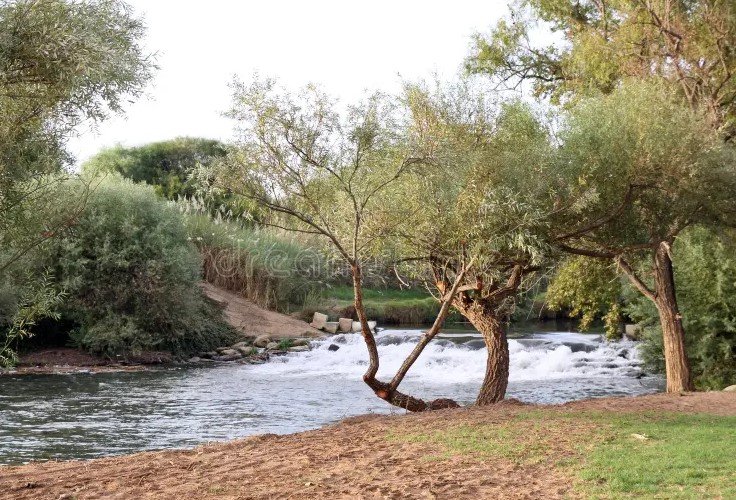A British backpacker retraced a volatile region’s geography on foot, uncovering stories etched in ash, silence, and longing.
In the cold rains of winter 2022, David Myers found himself hunched beside an elderly shepherd in a mountain hut in Jordan. Rain hammered the roof. Smoke from a tired old wood burner curled around the room. On the concrete floor between them, a stick dragged through the ash told a story more personal than politics or maps ever could.
The old man pointed at a place near the Jordan River, then tapped his chest. His home. A place he could no longer return to. Myers, a solo backpacker from the UK, had set out to better understand this region’s tangled stories. He didn’t expect them to be drawn so clearly—through lines in ash and tears that spoke louder than words.
One Footstep at a Time, Beyond the News Headlines
David didn’t start this journey out of bravado or thrill-seeking. It wasn’t about testing physical limits or chasing epic Instagram shots.
It started with a news report. Another round of violence in the West Bank. He paused, headphones in, and thought: How much do I actually know about this place?
So he flew to Amman. From there, he began walking. No support team. No sponsorship deals. Just a backpack, a rough route, and a stubborn need to see things for himself.
Sketching a Loop in a Land That Doesn’t Loop Easily
His route was ambitious, no doubt. From the headwaters of the Jordan River in the north, he traced its descent through the Jordan Valley to the Dead Sea—then looped back along the opposite bank. Three nations. Two deserts. Countless border patrols.
The idea sounded straightforward. On paper, it even looked like a circle. But reality had other ideas.
Some days he’d walk 25 miles. Others, just five. Border crossings meant detours or long waits. He got lost in Wadi Mujib’s canyons more than once.
One sentence:
Not every line on a map wants to be walked.

Hospitality Over Hardship: Who Welcomes a Stranger?
Despite the politics and checkpoints, Myers said he never lacked kindness. In fact, what surprised him most was how quickly strangers offered shelter, food, and—sometimes—hard truths.
One of the hardest evenings came after crossing from Jordan into the Israeli side of the valley. A family invited him in for a meal. Between the falafel and mint tea, the mood turned. The father began talking about his youth in Nablus, a city now in the West Bank. The man’s tone softened, then cracked.
He hadn’t seen his birthplace in over thirty years.
-
Encounters like these weren’t rare.
-
Myers shared campfires with Bedouin herders.
-
He helped rebuild a sheep pen in exchange for lentil stew.
-
He watched as a Palestinian teenager pointed to a fenced-off hill and said, “That used to be ours.”
None of this was theory or politics. It was personal.
Sleeping on Stones, Waking With Perspective
Camping in the desert isn’t always romantic. Finding a flat spot with no thorns or stones is harder than you think. Myers often woke up sore, his tent bent from wind, boots frozen with dew. But those mornings taught him something he didn’t expect.
“There’s clarity in discomfort,” he later wrote in his journal.
One night, in the Golan Heights, he watched the stars with a Syrian Druze farmer who quietly named constellations in Arabic. No talk of borders. Just sky.
What You Learn When You Walk Through Silence
The region buzzes with headlines, military tension, and loud debates. But walking forced Myers into silence. Long hours alone on dusty trails. No podcasts. No distractions. Just footsteps and thoughts.
He wrote little notes to himself, like:
-
“Don’t forget how that guy in Tuba Zangaria smiled when I said thank you in Hebrew.”
-
“Saw a bullet-riddled sign near Jericho. Wind kept whistling through it.”
Some days he questioned the point of the walk. Other days, he felt closer to understanding a place than ever before.
A Simple Table, A Complicated Landscape
Here’s a snapshot of the terrain Myers covered:
| Segment | Distance (approx) | Terrain Type | Border Complexity |
|---|---|---|---|
| Northern Jordan Valley | 120 miles | Rocky hills, farmland | Medium |
| Israel’s Galilee Region | 150 miles | Urban + mountainous | Low |
| West Bank Corridors | 180 miles | Arid highlands | High |
| Jordan’s Eastern Desert | 250 miles | Remote, sandy, exposed | Medium–High |
| Southern Return Leg | 300 miles | Canyonlands + wadis | Low |
Each segment held different rules. Different languages. Different fears.
Memory is the Only Border That Can’t Be Crossed
Near the end of the loop, Myers returned to where he’d started. Same trailhead, different man.
What he didn’t expect? That he’d carry so many people’s stories with him.
The shepherd who’d drawn maps in ash. The boy who asked what snow felt like. The checkpoint officer who shook his hand, then whispered, “Be careful.”
He didn’t solve the region’s conflicts. He didn’t try to. But he came away with something else—a quiet knowing that between the rivers and barbed wires, people still cook lentils, sing to goats, and draw maps in the dust.
